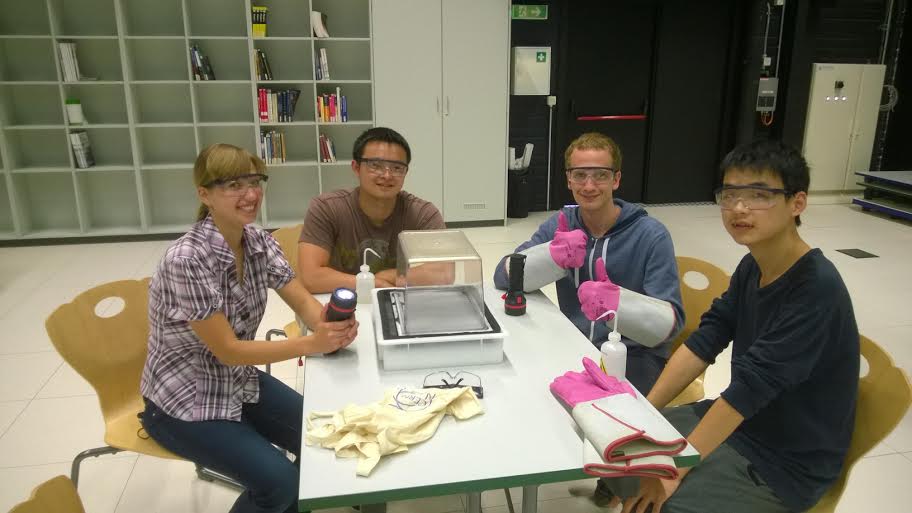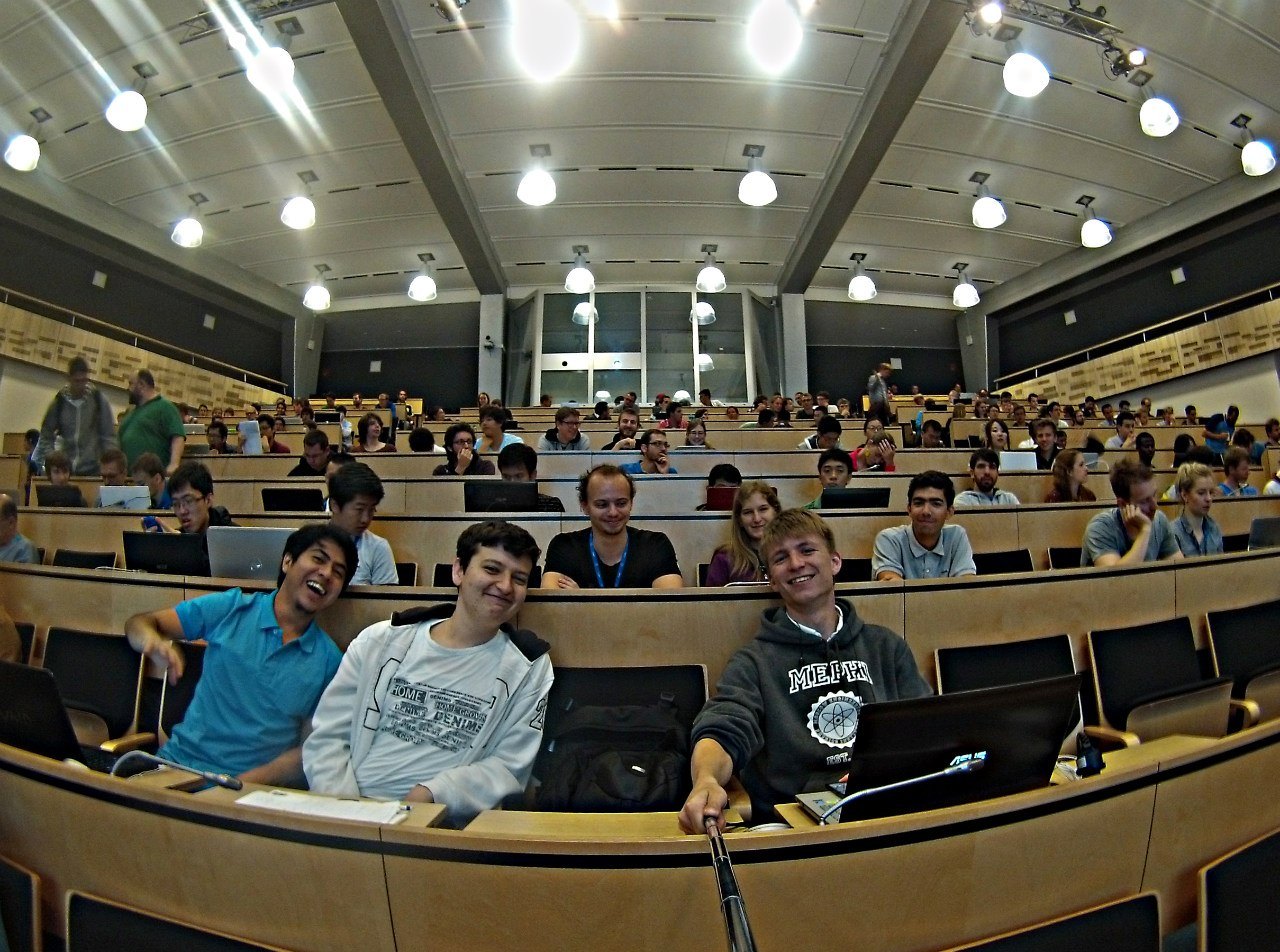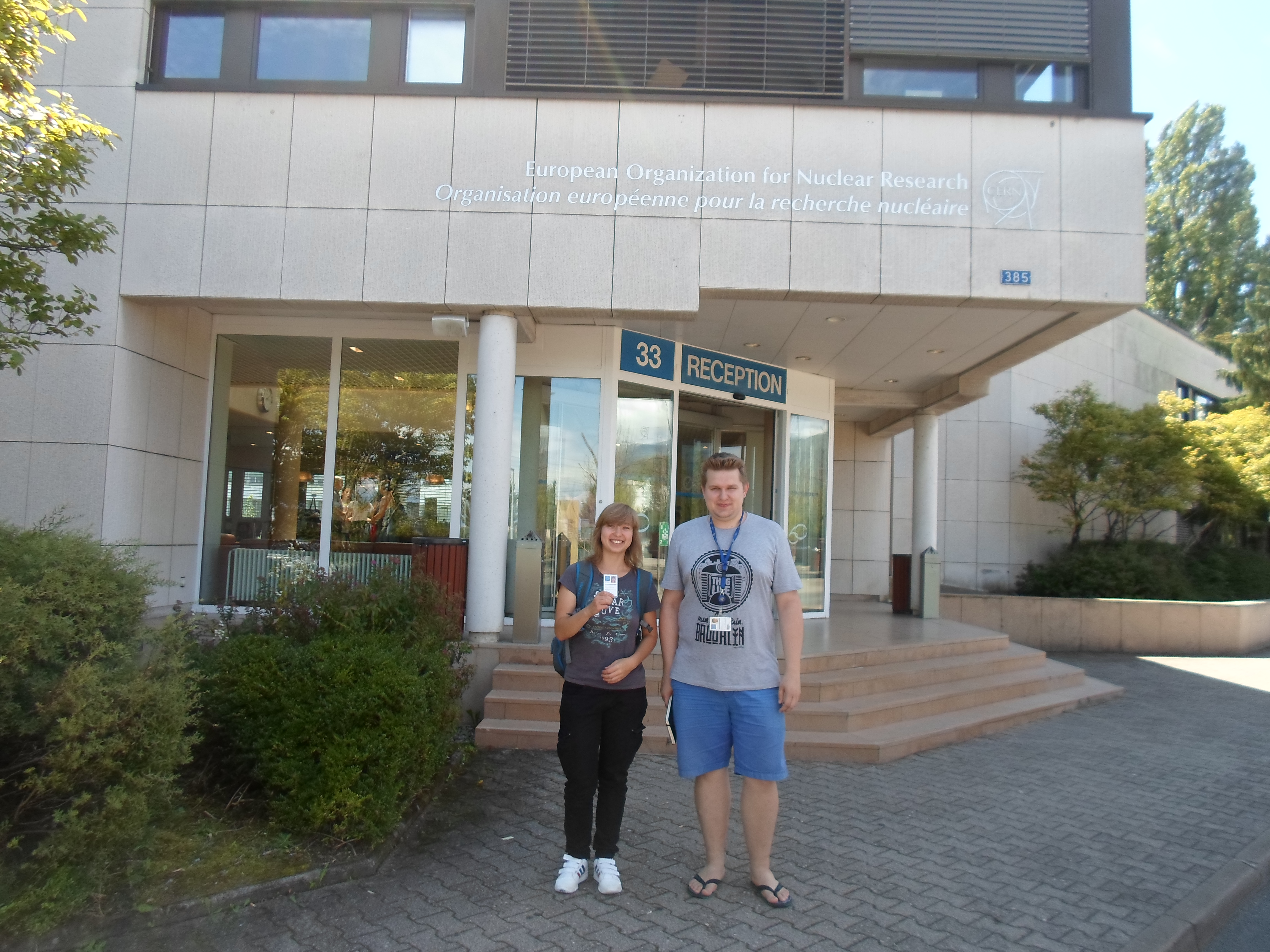NRNU MEPhI students doing summer practical work at the European Organization for Nuclear Research (CERN)
.f93d8153e4bae606f1ec449a4d218fdc2267.jpg)
National Research Nuclear University (MEPhI) works in close cooperation with international scientific centers. Longstanding collaboration with the European Organization for Nuclear Research (CERN) is a perfect example of such cooperation. MEPhI students take part in CERN programs every year. This summer, three students did their practical work in the largest high-energy physics collaboration astride the border of Switzerland and France. An intensive work in MEPhI preceded their visits since only the best students are given an opportunity to represent our institute in the cutting-edge research activities. We asked Svetlana Vdovkina (T8-40), Nikita Belyaev (T10-40) and Daniil Ponomarenko (T2-40M) to tell us a few words about their visit at CERN.

Left: Nikita, Svetlana and Daniil in the CERN main auditorium, where lectures for students were held. Right: Svetlana and Nikita at the CERN main entrance.
Svetlana
This year I went to the CERN Summer Student Programme. Students of the Elementary Particles Physics department #40 take part in it every year. It was my first time at CERN and in an international organization in general. I am working in a group, which analyzes data in the ATLAS experiment. Numerous theories of physics beyond the Standard Model predict various types of stable exotic objects. Some examples include magnetic monopoles, others predict the existence of Q-balls. These objects manifest themselves in the detectors as highly ionizing particles with charge |q| > 1e. An observation of stable highly ionizing particles possessing an electric charge above the elementary charge could be a signature for physics beyond the Standard Model. Our working group is searching for these very particles. During my summer internship, I was analyzing variables, which can be used to distinguish Q-balls from muons with an electromagnetic or hadronic shower nearby. This study is a continuation of my MEPhI research project I was working on under supervision of associate prof. Oleg Bulekov.

Svetlana is doing a practical work searching for cosmic particles tracks with other students.
I have got an invaluable experience of working in the international organization, met a lot of interesting people, learned about educational process in other countries. I will remember this inexpressible atmosphere of science and friendship for a long time.
LHC underground visits were the most interesting events. Besides huge ATLAS and CMS detectors, I managed to look into the LHC superconducting magnet and to assemble a Wilson chamber, an elementary particles detector prototype. Enormous, complex but perfectly organized scientific collaboration from all over the world is really impressive! Here at the summer school there is no place for boredom, and everybody is so amazing! I will never forget all the cheerful adventures, which happened during two summer months.
Daniil
I never hesitated to participate in the Summer Student Programme. I heard about it when students from my home university participated in this program and told me that it would be a good experience for me too. After a few discussions with them and my professors, I decided to apply for a summer in the Mecca of modern physics. My bachelor degree was devoted to electromagnetic showers modeling in the PHOS calorimeter using Geant4 package while my master thesis is about analyzing data from the ALICE experiment under supervision of Dmitry Blau and Dmitry Peressounko. Here at CERN, my project is focused on studying correlations between π0 and charged hadrons with PHOS, one of the ALICE detectors. I hope that the results of this analysis will help to improve our understanding of the strongly-interacting nuclear matter properties, the deconfined state of quarks and gluons, created in ultra-relativistic heavy-ion collisions. CERN is an amazing place! There are so many people carried away by physics. Professors from all over the world gave lectures in various fields of science. We had all the conditions needed to succeed in work at CERN. My most favorite place at CERN is Restaurant 1. Big and comfortable tables, glass walls which provide you with good view to Montblanc and airport glissade, fast Wi-Fi, research atmosphere - all this increased my efficiency. Finally, I saw the PHOS detectors modules that were designed and constructed by NRC "Kurchatov Institute" team. Moreover, I took the opportunity to visit the LHC experiments. Thanks to Michael Weber for organizing a great visit to ALICE! I also visited the ALICE, CMS and ATLAS experiments. They are so big and so complicated. Everything I saw lived up all my expectations.

Daniil attending a lecture in the main auditorium.
During my stay at CERN I made a lot of new friends. We went for a trip in Montreux, hiked in mountains, searched for summer student temple in CERN basement, swam in Geneva lake and much more. Our team took part in the WebFest. We developed a framework for automatic studying and correlation building practically in all types of data: music, pictures, text files. We did not win, but I received new knowledge about application development and found contact with OpenLab students. Hopefully, our team will continue to work under this project. By the way, it can help us to keep in touch. Finally, I will always remember the people whom I met here at CERN. Communication with them blasted my mind. I will also remember the friendly atmosphere in the circle of amazing people from all over the world and the spirit of cutting-edge research.
Nikita
My first research work related to CERN started in autumn of 2012, when I first met my supervisor – Rostislav Konoplich. The studies were conducted as part of the ATLAS collaboration research program and were devoted to the study of the Higgs boson properties. I was interested in a high-energy physics for a long time so my work has captivated me quickly. In the summer of 2013 I was invited to CERN to participate in the Summer Student Programme, so I was really happy because I dreamed about it a lot. I had the opportunity to work with the world’s leading experts in the high energy physics field, to see the ATLAS, CMS and LHCb detectors, to visit the most beautiful places in Switzerland and France during the weekends. My scientific work during the Summer School has been devoted to the modeling of processes for TLEP and LEP3 colliders, which are currently considered as a future alternative to the Large Hadron Collider (LHC) immediately after the completion of its research program. These colliders will work on high-energy electron-positron beams that will allow us to study the properties of the new scalar boson in much more details. The discovery of this boson at the LHC was announced in summer of 2012.
Nikita against the ATLAS detector during a visit organized for students.
This year I started doing my qualification task in ATLAS. A successful completion of this task will make me a full member of the collaboration. The aim of this work is to develop and support TRT PID tool - a software package for electrons identification in the transition radiation tracker.
A lot of interesting events, lectures and visits were organized during the summer school. In particular, I remember a workshop with students assembling small Wilson chambers. It was very interesting to observe cosmic rays particles leaving tracks after decaying or traversing the whole chamber. Besides, the chamber design was very simple, so I assembled a similar chamber at home myself and carried out some little experiments afterwards.
Text by Dimitriy Krasnopevtsev
.20.08.2014



.JPG)